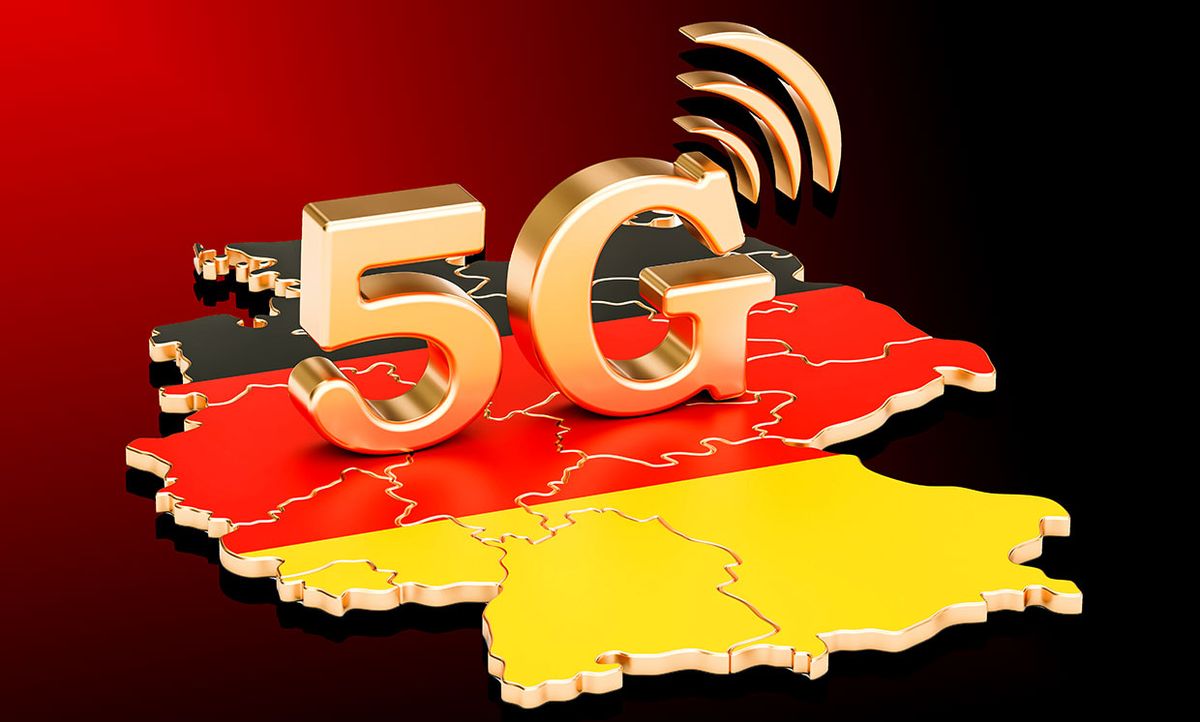Around the world, the deployment of 5G is well underway as providers build infrastructure and government agencies allocate spectrum for the next generation of wireless. In some countries, however, the going is getting tough. In Germany, for example, network operators and industry groups have harshly criticized the Federal Network Agency over its upcoming 5G spectrum auction.
At the heart of the problem is whether Germany’s Federal Network Agency—Bundesnetzagentur, or BNetzA for short—has unrealistic expectations about the kind of coverage providers can be expected to implement with the spectrum up for auction. One industry group, the Global System for Mobile Communications Association (GSMA), has argued that BNetzA’s spectrum licensing conditions could threaten Germany’s ability to develop a 5G network that will allow its manufacturing, industrial, and technology sectors to remain competitive.
The auction will allocate frequencies in the 2 gigahertz and 3.4 to 3.7 GHz bands in 5 MHz blocks. Operators will bid on individual blocks for specific geographic regions, a process that will continue over multiple rounds until there are no higher bids. The application period for the auction—which has been scheduled for spring 2019—opened on November 26, and interested bidders have until January 25, 2019 to submit an application. Each operator then has the exclusive right to use the 5 MHz chunks of frequency, in the specific regions, that they won.
In a statement to IEEE Spectrum, BNetzA said that mobile radio frequencies are allocated in a technology-neutral manner, and that the agency does not recommend specific mobile radio standards. But it’s possible that BNetzA’s tech agnostic attitude in using this spectrum to create a country-wide 5G network could backfire by encouraging operators to build out advanced 4G networks instead of true 5G networks.
BNetzA’s technology and standards agnosticism doesn’t seem to sit well with the GSMA. In one response to the BNetzA’s announcement that much of the C band (3.4-3.8 GHz) would be released for 5G infrastructure development in the upcoming auctions, the GSMA says the proposed coverage obligations “appear to disregard the laws of physics.”
In a follow up response, the GSMA explains—after claiming that the BNetzA’s license conditions could “poison” 5G investment—exactly what coverage obligations the industry group has problems with. For any operator possessing a license for a chunk of C band spectrum, BNetzA will obligate them to cover 98 percent of the population, as well as provide coverage along travel routes. That includes not only highways, but routes such as country roads, waterways, and railroads. All coverage must offer at least 100 megabits per second downlink and 10 millisecond latencies—though 5G networks are expected to provide much higher downlink rates, especially in dense urban areas. And providers must meet these coverage obligations by 2022.
BNetzA requires the same 100 MBps downlink and 10 ms latency for current 4G LTE networks. However, LTE’s lower frequency wavelengths lead to much easier propagation over long distances.
The trouble with the C band, like all high frequency signals, is how well it propagates. The band’s inability to penetrate walls, for example, is one of the biggest problems engineers face when developing and deploying 5G networks. Even in a wide-open space, signals in the C band don’t travel well after only a few kilometers because of moisture in the atmosphere. Rain only exacerbates the problem.
The network operators, which are members of the GSMA, are also arguing that the investment required to provide the amount of wide-area coverage using C band will vastly outpace the value gained. Deutsche Telekom, in a statement to IEEE Spectrum, said in part that “any regulation in the direction of mandatory national roaming is hostile to investment, especially for the supply of rural areas.” A spokesperson from Telefonica explained that BNetzA’s speed and area demands will likely result in widespread advanced 4G networks covering these areas, rather than true 5G networks.
Providers in countries around the world recognize that a 5G network requires multiple frequencies used in concert in order to succeed. Aside from C band spectrum, 600 MHz spectrum and millimeter waves (60 GHz) will play vital roles in providing extremely high data rates across wide areas.
Germany has been criticized in past years for communications infrastructure that lags behind the rest of Europe. In its efforts to build a robust, country-wide 5G network by requiring near-complete coverage of higher frequency bands, however, the BNetzA may find that the cost to implement it could continue to keep the country at the back of the 5G pack for some time to come.
Michael Koziol is an associate editor at IEEE Spectrum where he covers everything telecommunications. He graduated from Seattle University with bachelor's degrees in English and physics, and earned his master's degree in science journalism from New York University.



